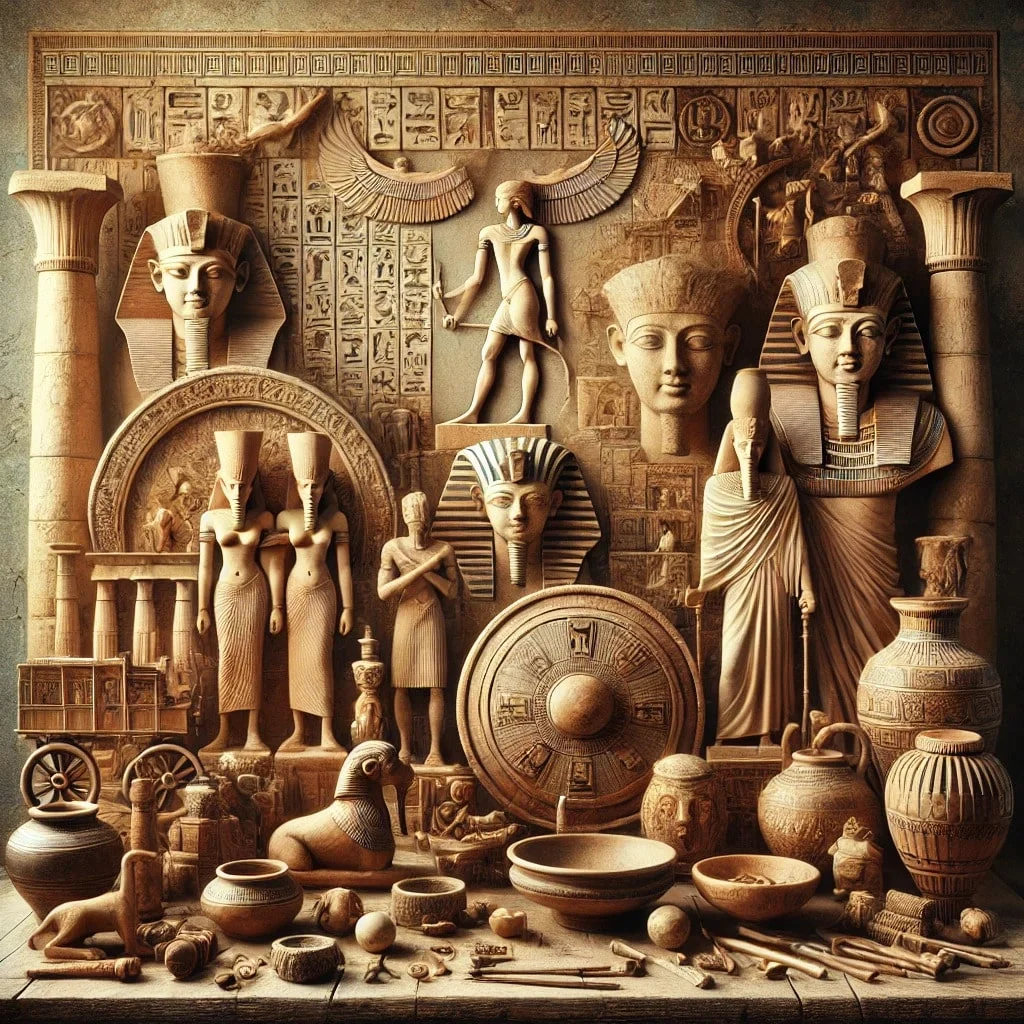The Origins of Ancient Artz
Ancient artz refers to the artistic expressions of civilizations before the modern era. From the first cave paintings to intricate sculptures, these creations reflect the earliest forms of human creativity. Spanning prehistoric times to the end of the Middle Ages, ancient artz showcases the diversity of cultures and their innovative approaches to art.
The origins of ancient artz date back thousands of years. Early humans painted on cave walls, sculpted figurines, and carved symbols into stone. These rudimentary forms of expression were more than just artistic—they were a way to communicate, document their lives, and connect with the spiritual realm. Artifacts like the Lascaux cave paintings and Venus figurines reveal humanity’s innate desire to express emotions and ideas visually.
The Evolution of Ancient Artz Through Eras
Art has evolved alongside human civilization. Each era brought unique styles, materials, and themes to ancient artz, reflecting the values and advancements of the time.
- Prehistoric Art: Cave paintings, such as those at Altamira and Lascaux, depicted hunting scenes and animals, symbolizing survival and spirituality.
- Egyptian Art: With its emphasis on order and symmetry, Egyptian art included hieroglyphs, tomb paintings, and statues honoring gods and pharaohs.
- Greek and Roman Art: These civilizations celebrated human anatomy and realism. Greek sculptures like the Venus de Milo and Roman frescoes demonstrated a mastery of proportion and storytelling.
- Medieval Art: The Middle Ages brought a focus on religious themes, with illuminated manuscripts and Gothic cathedral sculptures.
Each period added to the rich tapestry of ancient artz, preserving cultural narratives for future generations.
Techniques and Materials in Ancient Artz
The creation of ancient artz involved innovative techniques and materials that varied across cultures.
Tools and Methods
- Carving: Stone, wood, and bone were carved into intricate designs and statues.
- Painting: Natural pigments like ochre, charcoal, and plant extracts were used to create vibrant colors.
- Metalwork: Ancient civilizations crafted jewelry and weapons using gold, bronze, and iron.
Materials
- Clay: Used for pottery, figurines, and architectural decorations.
- Stone: Marble, limestone, and granite were popular for monumental sculptures and structures.
- Textiles: Early weavers created intricate patterns on fabrics for ceremonial and everyday use.
These methods and materials allowed ancient artists to create works that have stood the test of time.
Ancient Artz and Mythology
Mythology played a central role in ancient artz, serving as both inspiration and subject matter. Across cultures, artists depicted gods, heroes, and legendary events to honor their beliefs and connect with the divine.
- Greek Mythology: Sculptures like the Discus Thrower and the Parthenon Frieze illustrate tales of gods and athletic prowess.
- Egyptian Mythology: Paintings in tombs depicted journeys to the afterlife, while statues of deities like Anubis symbolized protection and guidance.
- Mesoamerican Mythology: Intricate carvings of Quetzalcoatl, the feathered serpent, showcased the importance of religion in Mayan and Aztec societies.
By integrating mythology into their art, ancient cultures left a legacy of their spiritual and cultural values.
Rediscovery and Influence in the Renaissance
The Renaissance marked a revival of interest in ancient artz, as scholars and artists sought inspiration from classical antiquity. This period saw:
- The Study of Ancient Works: Artists like Michelangelo and Raphael studied Greek and Roman sculptures to improve their techniques.
- Architecture: Renaissance architects emulated classical styles, incorporating columns, domes, and symmetry into their designs.
- Cultural Exchange: Ancient texts and artifacts fueled a renewed appreciation for classical themes and techniques.
This rediscovery shaped the trajectory of Western art, bridging the gap between ancient and modern expressions.
Challenges in Preserving Ancient Artz
Preserving ancient artz is a complex endeavor. These priceless artifacts face numerous threats, including:
- Environmental Degradation: Exposure to moisture, temperature fluctuations, and pollution damages materials over time.
- Looting and Theft: Unregulated excavation and illegal trade put historical artifacts at risk.
- Restoration Challenges: Balancing authenticity with necessary repairs requires meticulous care and expertise.
Despite these challenges, museums and cultural institutions work tirelessly to protect these treasures for future generations.
Notable Examples of Ancient Artz
The Parthenon Frieze
The Parthenon Frieze, a masterpiece of ancient Greek sculpture, depicts a grand procession honoring Athena. Created between 447 and 432 BC, its intricate carvings and dynamic figures showcase the skill and cultural pride of the Athenian people. This iconic work embodies the ideals of balance, harmony, and civic identity central to ancient Greece.
The Terracotta Army
Discovered in 1974 near Xi’an, China, the Terracotta Army is a remarkable example of ancient artz. This collection of life-sized statues was buried with Emperor Qin Shi Huang to accompany him in the afterlife. Each figure is unique, with detailed facial features, armor, and weaponry, reflecting the sophistication of Qin Dynasty artisans.
The Legacy of Ancient Artz
Influence on Contemporary Art
Ancient artz continues to inspire modern artists. The use of classical motifs, marble sculptures, and fresco techniques reflects the enduring appeal of ancient aesthetics. Themes of identity, spirituality, and human experience, central to ancient art, resonate with contemporary creators.
Importance of Preservation
Efforts to study and preserve ancient artz deepen our understanding of human history. From archaeological excavations to advanced conservation techniques, these endeavors ensure that future generations can appreciate and learn from these timeless works.
Conclusion
The journey through ancient artz reveals the profound creativity and cultural significance of early artistic expressions. From prehistoric cave paintings to monumental sculptures, these works are more than just relics—they are windows into the lives, beliefs, and values of our ancestors. By preserving and studying ancient artz, we honor the universal human desire to create, connect, and communicate across time and space.


